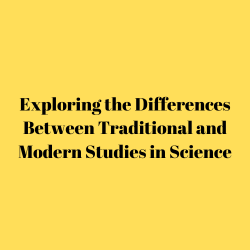What is the Theory of Relativity?
The Theory of Relativity, formulated by Albert Einstein in the early 20th century, is a pivotal concept in the field of physics. It fundamentally transformed our understanding of space, time, and gravity, and is divided into two main components: Special Relativity and General Relativity. Special Relativity, introduced in 1905, deals with the physics of objects moving at constant speeds, particularly those moving close to the speed of light.
It proposes that the laws of physics remain the same for all observers in uniform motion relative to each other, leading to groundbreaking implications about time and space, notably the concept of time dilation. This means that time can pass at different rates depending on the object’s speed and gravitational influence, an idea that challenges our everyday understanding of simultaneity.
General Relativity, published in 1915, expands upon the principles established in Special Relativity. It introduces a new framework for understanding gravity not merely as a force, but as a curvature of spacetime caused by mass. According to this theory, objects with mass warp the fabric of spacetime around them, and this curvature dictates the motion of other masses. This revolutionary perspective on gravity provides explanations for a variety of phenomena, from the orbit of planets to the bending of light around massive objects. Both aspects of the Theory of Relativity have been confirmed through numerous experimental validations, significantly influencing modern physics and technology, including GPS systems, which must account for relativistic effects to maintain accuracy.
Overall, the Theory of Relativity is crucial in advancing our comprehension of the universe, as it elegantly combines our understanding of the macroscopic forces at play, laying the groundwork for further advancements in theoretical physics and cosmology.
Key Concepts of Special Relativity
The Theory of Special Relativity, formulated by Albert Einstein in 1905, introduces several revolutionary concepts that transform our understanding of space, time, and motion. One of the cornerstone ideas is that the speed of light remains constant, irrespective of the observer’s motion. This means that whether you are standing still or moving rapidly, the speed of light is always measured to be approximately 299,792 kilometers per second. This constancy leads to several intriguing and counterintuitive phenomena, including time dilation and length contraction.
Time dilation is a fascinating consequence of Special Relativity that posits that time can flow at different rates for observers in relative motion. To illustrate this, consider two identical twins. One twin stays on Earth, while the other travels on a spaceship at near-light speed. When the traveling twin returns, they find that they have aged less than their Earth-bound sibling. This is due to the fact that time passes more slowly for the twin in motion, a phenomenon that has been confirmed through various experiments with atomic clocks on high-speed jets.
Another significant concept is length contraction, which describes how objects appear shorter in the direction of motion when they move toward an observer at relativistic speeds. Imagine watching a high-speed train pass by; to a stationary observer, the train may seem compressed compared to its length at rest. However, for someone on the train, it appears normal. This disparity exemplifies how measurements of distance vary depending on the observer’s frame of reference, further illustrating the complexities introduced by Special Relativity.
Grasping these concepts can be challenging, but with everyday analogies and thought experiments, one can appreciate the profound implications of Einstein’s theory in our view of the universe. Understanding that time and space are not absolute but relative profoundly impacts the disciplines of physics and cosmology.

Understanding General Relativity
General Relativity, formulated by Albert Einstein in 1915, represents a transformative shift in our understanding of gravity. Moving beyond the confines of Newtonian physics, which describes gravity as a force acting at a distance, General Relativity introduces the concept of spacetime—a four-dimensional fabric woven from the three dimensions of space and the dimension of time. In this framework, gravity is not merely a force but a consequence of the curvature of spacetime itself.
The presence of mass influences spacetime, causing it to warp. This curvature dictates the motion of objects, guiding them along the curves created in the spacetime continuum. For instance, when a massive body like the Earth is placed in spacetime, it creates a depression or a ‘dimple’ that other objects, such as the Moon or artificial satellites, follow. The path these objects take is not a result of a direct force pulling them but rather a manifestation of their motion along the curved spacetime. Such intricate dynamics are often illustrated using simple diagrams, depicting how the presence of massive celestial bodies affects the trajectory of smaller objects.
Common misconceptions arise when gravity is considered solely through the lens of Newtonian physics. While Newton posited gravity as an attractive force, the relativistic view emphasizes that objects in motion are influenced by the geometry of the universe around them. This shift in perspective helps explain various phenomena that Newtonian physics struggles with, such as the precession of Mercury’s orbit. As we delve deeper into General Relativity, it becomes clear that our traditional ideas about gravity may need reevaluation in light of this profound theory, revealing the elegant interplay between mass, motion, and the structure of spacetime.
The Impact of the Theory of Relativity
The Theory of Relativity, formulated by Albert Einstein, has profoundly influenced contemporary science and technology, marking a turning point in our understanding of space, time, and gravity. One of the most notable applications of relativity is in the realm of global positioning systems (GPS). The accuracy of GPS satellites is critically dependent on the principles of relativity; without accounting for the time dilation effects predicted by the theory, navigation systems would yield significant errors. The satellites operate at high altitudes and speeds, which necessitates adjustments to the onboard clocks due to relativistic time discrepancies compared to clocks on Earth.
This adjustment is not merely a technicality but a crucial factor in maintaining the reliability of modern navigation. Moreover, relativity has been instrumental in advancing our knowledge of cosmology. It laid the groundwork for the current understanding of the universe’s structure, particularly through the study of black holes and the expansion of the universe itself. The implications of Einstein’s equations extend beyond theoretical physics and into practical applications, such as identifying the paths of gravitational waves, which were first detected in 2015.
Conclusion
Furthermore, the theory has affected our perception of time and space, challenging long-held notions and offering new insights into the fabric of reality. Physicists and researchers continue to explore the consequences of relativity, finding new connections between the theory and fields such as quantum mechanics, which could unveil deeper truths about the universe. The enduring relevance of Einstein’s ideas serves to inspire ongoing investigations and curiosity within the scientific community. By fostering a deeper interest in physics, we can encourage more individuals to explore the fascinating complexities of the universe and the principles that govern it.
Read Our Latest Blog
How to Prepare for Competitive Exams Like JEE/NEET
Phone Number: +91-7488456170
Email ID: abhishek@eepl.me
Our Platforms:
Digilearn Cloud
EEPL Test
Live Emancipation
Follow Us on Social Media:
Instagram – EEPL Classroom
Facebook – EEPL Classroom
Stay connected and keep learning with EEPL Classroom !










